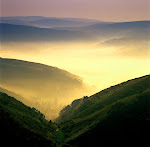
The first time I saw a Maasai was on my ride from Mushi Town to Arusha. It was a male member of the tribe and he was wearing a red cloth slung around his shoulder and waist, wore sandals, his hair was shorn to the scalp and he was carrying a wooden club. But what really caught my attention were the beads around his ankles and wrists. He was alone and walking along a stretch of dry bush. He was tall, lean and his walk was graceful and hypnotizing. I needed to know more about this tribe.
I shared my fascination and curiosity with my guide Stephen on our way to the Serengeti. Next thing I know he is pulling in to one of the Maasai villages. Stephen asks for permission from the chief to enter the village. After a quick conversation and a donation, the chief rounded up his tribe. Stephen, Joseph and I were greeted with a traditional Maasai tribal welcome dance. It was spectacular. Afterwards, the chief gave me a private tour of the village and explained the traditions of the tribe.
Historically, they were the most powerful and feared tribe in western and central Kenya, as well as in northern Tanzania. Their tight social organization, their offensive warfare and infamous cattle raids, as well as their mobility as cattle-herding nomads, ensured that they could go where they pleased, and could take what they wanted from neighboring people. They were rarely defeated. As a result, their history before the arrival of the British was one of ceaseless expansion at the expense of other people. Their combined Kenyan and Tanzanian territory in the seventeenth century has been estimated at 200,000 square kilometers.
But this is just one side of the story. The other is told by their territory today, which in Kenya covers under 50,000 square kilometers (for pretty much the same population), or less than a quarter of what it was before the British arrived. The Maasai have been progressively confined to smaller and smaller areas of land. The British stole most of it, but even in recent decades land has continued to be expropriated, this time in the form of the wildlife parks of Amboseli and Maasai Mara. The lands stolen under the colonial rule are now mostly commercial cattle or wheat ranches. Story reminds me a bit of our American Indians.
With the exception of a handful of particularly abrasive politicians peddling little more than tribal hate, the Maasai remain marginalized from the Kenyan mainstream, both politically and economically. Yet they have stubbornly refused to abandon their pastoralist way of life, or their traditions, despite repeated attempts by both colonial and post-independence governments to cajole or force them to settle and join the cash economy.
In the minds of the Maasai is an entire people's collective refusal to cede to the social inequality and notion of western superiority imposed by colonial rule, and indeed by the post-independence governments. What I thought was arrogance is in fact both pride, as well as bitterness; but it remains to be seen for how much longer the Maasai can withstand the process of modernization, which has already changed the cultures of their neighbors beyond recognition.





No comments:
Post a Comment